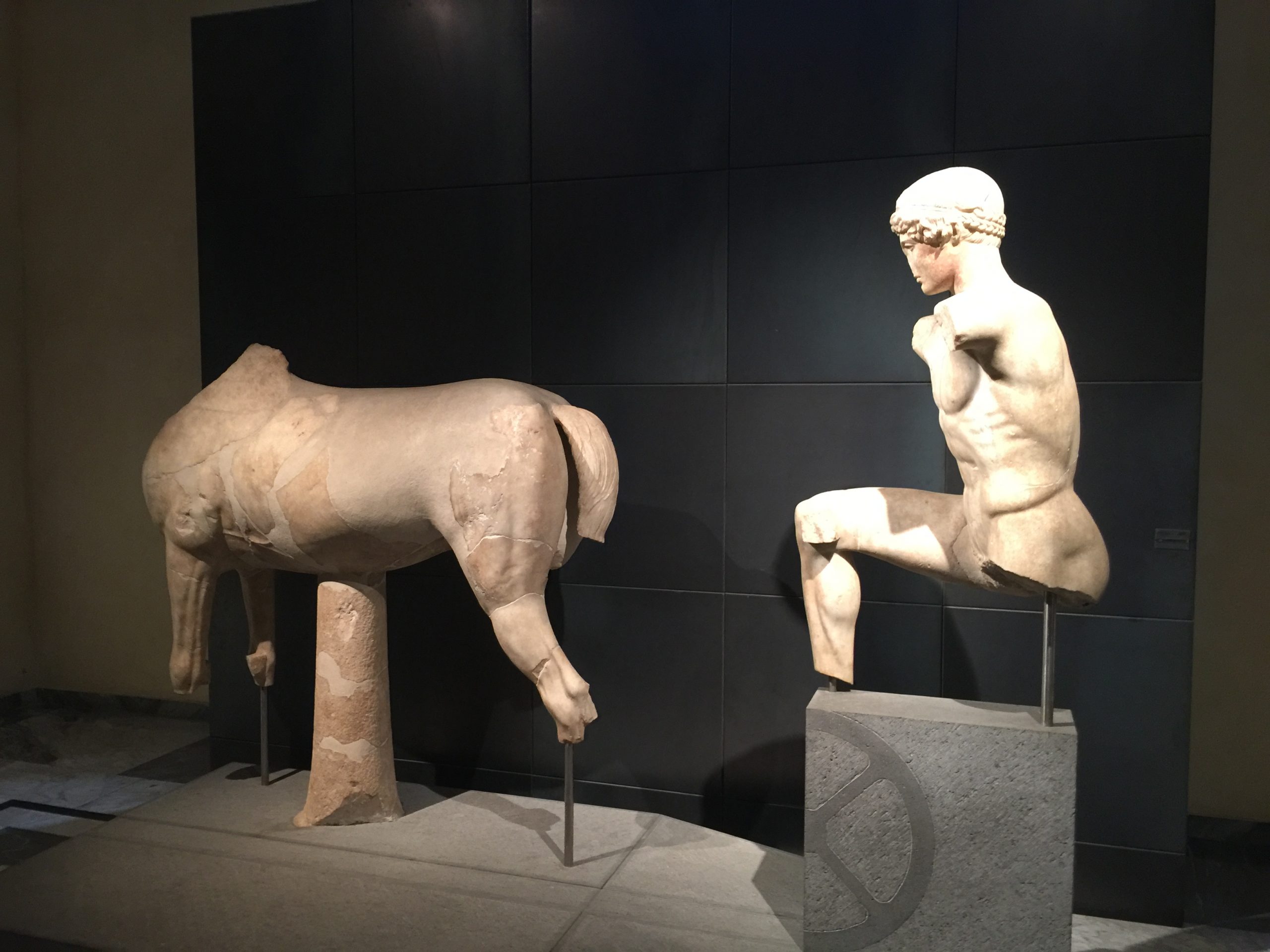Struggle of the Magicians – the Battle for the Higher Self

Many myths and spiritual traditions describe a struggle between competing inner entities in man or woman. Some term these entities the lower self and the higher self. Gurdjieff described this struggle as ‘the struggle of the magicians.’ Curiously, this struggle becomes apparent when the way the lower self perceives its imaginary picture of the world becomes threatened.
Spiritual traditions often provide esoteric knowledge that may be used to separate the coarse from the refined in oneself. This act of discrimination enables, over time, a gradual transition within oneself. From more mechanical aspects of our being, one moves to more conscious ones. The demon, or lower self, is the very material from which the higher self evolves.
States of Consciousness as described in the Fourth Way
The Fourth Way describes four states of consciousness possible for man. The first, sleeping, as we do in bed at night. The second is relative awakening, or relative sleep. In this state we speak, fight, make love, dine, and read, to name a few activities. To this state we shall return later. The third and fourth states are different. In these two higher states, one is acquainted with truth, and capable of absorbing cosmic consciousness. While in the third state, one knows the truth about oneself, in the fourth, one knows the truth about the world. Presence is a general term for the third state, and a threshold for the fourth state of consciousness.
Presence is the one we call the Beloved. – Rumi
Generally speaking, the third and fourth states of consciousness are wordless, and cannot be described in words. The higher emotional and higher mental functions in man are those that perceive and sustain the third and fourth states of consciousness, respectively.
The Steward and the Support of the Nine of Hearts
Fortunately, however, there is help from below. The human apparatus that most closely approaches, and is able to support, higher states of consciousness, is the intellectual part of the emotional center, also called the steward. More specifically, it is the “nine of hearts,” providing energy to the steward to help it guide one’s inner work.
This is the part in man that is capable of perceiving beauty in adversity or unpleasant situations. It is also capable of transforming or refining energies that we experience, from the more coarse to the more refined.
Conquer the self by the Self. – Buddha
The struggle of the magicians largely takes place in the second state of consciousness. It reflects the fine gradations that characterize this state. As Robert Burton advises, “Expression of negative emotions is closer to the first state of consciousness. Transformation of suffering is nearer to the third state of consciousness.”
Struggle of the Magicians – the Real and Unreal – in Oneself

holding Third Eye, or higher centers
First, what is real in oneself? Gurdjieff said man is a lying animal; he has to learn to tell the truth. Sincerity requires self-knowledge. It is an effort to see what one is and where one may go. But it also requires courage to see what is highest in oneself and the means to get there. This work of sincerity is a path that leads from lower states to higher ones.
This is beautifully described in the fairy tale of Hansel and Gretel. Fleeing the negativity of a wicked stepmother, Hansel marks their path with pebbles, in search of another way to live. Another image, from Greek mythology, is Ariadne’s thread. The steward, Theseus, escapes the labyrinth of the lower self, using the thread of Ariadne—the nine of hearts—to trace the way out. These examples point to a true line of direction, indicating how to escape the prison of the lower self in which it is all too easy to live.
The Work of Sincerity—to Become Real
The effort to be sincere, echoed in William Shakespeare’s line in his play, Hamlet, ‘And this above all, to thine own self be true,’ may require elucidation. What within us has the ability to be sincere, and can develop higher states? What is true within us, and what is unreal?
Modern psychology seems to sanction the open expression of negative emotions. Indeed, psychological types that tend to thus express themselves may be favored in life. However, the Fourth Way sees things differently. Ouspensky spoke of ‘a worm in us that wishes to express itself,’ the lower self. Non-expression of negative emotions is the very treasure from which presence, or consciousness, can spring.
“In war, one may defeat a million invincible enemies, but to conquer one’s own self is the greatest victory.” – Mahavira
Consciousness & Conscience – Making an Internal Profit
A note on the concept of ‘conscience’ may be helpful here. Conscience can be described as a deep emotional impulse, a state in which one rises above internal contradictions, and transcends one’s habitual self into the higher self. This is done through acting in accordance with conscience’s impulses and related conscious emotions. Ouspensky mentioned that the aim of the Fourth Way is to bring man to conscience.
Self-remembering, or being present, is distinct from conscience. Presence is always right action. It is always right to remember oneself. While conscience, on the other hand, requires relativity, leading to a right choice, a more conscious action. For example, one may feel a strong urge to retire to monastic life. If, however, one has close family or friends that need tending to, such a move may not be possible.
Consciousness and conscience, acting together, will make a conscious profit out of every internal and external circumstance.
We always make a profit. – Gurdjieff
